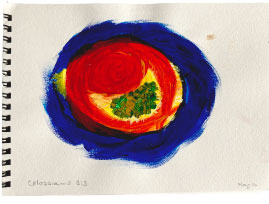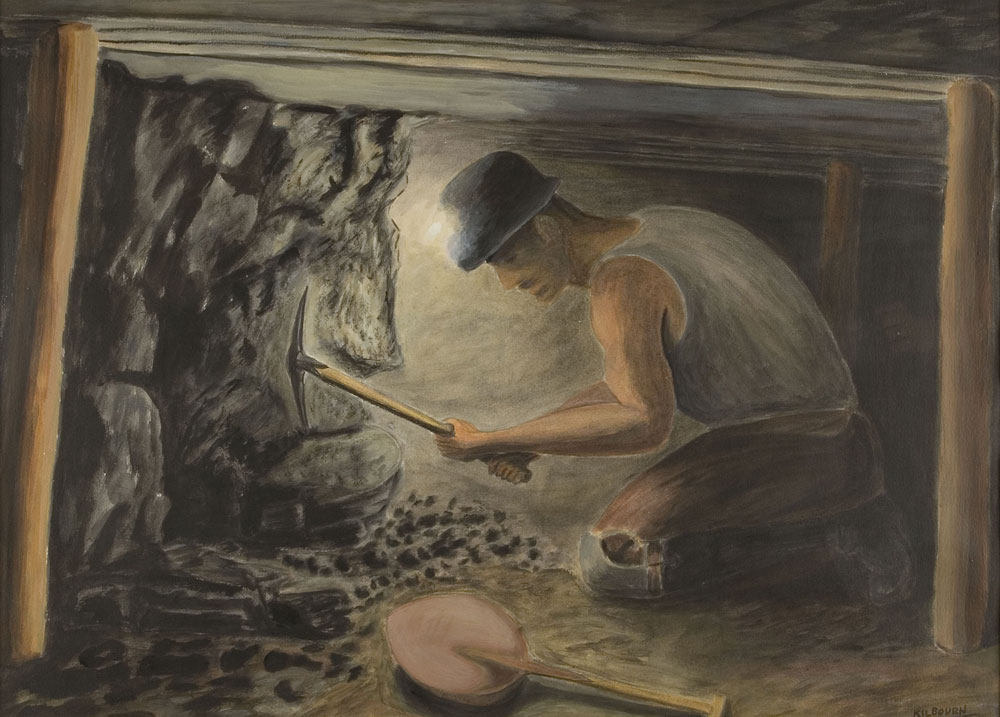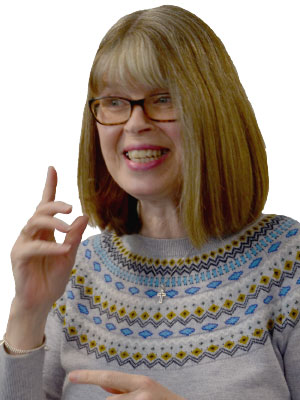
The Pitmen Painters
Lynn Green on how a group of miners who took up painting not only inspired her creativity, but also offered profound insights to discipleship
Experiencing art can create transformational encounters. This happened for me seeing Lee Hall’s play
The Pitmen Painters at the National Theatre. I absolutely love the way that theatre draws you in to the story itself and enables you to feel what is being portrayed. I came to the theatre with a previously held assumption that I was ‘no good at art’ and I left with the wonderful realisation that art was not about being good or bad, art was about expressing what you see and feel. It is hard to convey to you the depth and beauty of that moment and how I was able to see differently and find the freedom, confidence and joy to enjoy art in a new way. That moment has encouraged me to discover ‘me shaped’ ways to be creative!
But maybe you are not aware of the story of
The Pitmen Painters? Let me tell you more. Back in the 1930s, in Ashington, Northumberland, the local branch of the Workers’ Educational Association (WEA) was offering evening classes. A group of men, mainly miners from the Woodhorn and Ellington collieries, had a deep desire to learn new things and were committed to self-education. Most of them had left school at 12 or 13 and worked demanding 12 hour shifts down the pit. This group had recently finished a long period of studying evolution but now agreed that they would move on to art appreciation for their next topic. The WEA arranged for Robert Lyon, Master of Painting at Armstrong College, Newcastle to teach the class. After a few weeks of showing slides of the great masters, the class was restless and dissatisfied, so Lyon quickly concluded that something different was needed! He decided to adopt an active learning approach and seeing that the men were used to working with their hands, Lyon asked them to create lino-cuts based on their everyday lives. Through this approach, Lyon hoped the men would be able to get into the heads and hearts of different artists and appreciate their artistic methods, thus learning and growing as they explored and experimented. The results were remarkable and powerful.
These men did not consider themselves to be ‘good at art’ and had no formal artistic skills and yet as they created art from their own experience and returned to the group each week to compare notes, what later became known as the ‘Ashington Group’ of artists, was born. Group member, Oliver Kilbourn, summed things up succinctly, “Start painting, it’s as simple as that.”

And being inspired by their example, this is what I created to express the sense of my life being hidden in Christ.
But this story doesn’t just inspire my creativity, it also offers some profound insights to my discipleship.
I am struck by the sheer dedication and commitment of these men to learn and grow. They had an inspirational desire to expand their minds and not be defined by the narrow confines of their everyday lives. After working a 12 hour shift of demanding physical labour, these men would go out again in the evening to their evening class. I ask myself, am I similarly dedicated and committed to my own discipleship? Do I nurture in myself a longing for growing as a disciple? Am I motivated to pursue discipleship even when sorely tempted to take the easy road in life?
I also love the fact that their art developed through reflecting on their own practice. They took their everyday experiences and had a go at expressing them through art. This included hard graft and painful grief. It also embraced the contentment of everyday life and the joy of leisure pursuits. This was not primarily a theoretical or academic exercise. They learned through doing and then through listening to feedback from others. In doing so, they had to confront that inner voice saying, ‘this is not for me, I am no good at art’.
What a beautiful picture of discipleship. We are all disciples and no one is ‘not good enough’. We all grow through having a go and then reflecting on how it’s going. And I love the emphasis on engaging with reality. Discipleship is not some curated life we imagine for ourselves, it is lived out in the nitty gritty of the everyday. Looking for beauty, meaning and purpose in what is, is both a deep challenge and a great gift. Just as they were ‘whole life’ artists, we are called to be whole life disciples. This leaves me wondering how my discipleship can more fully encompass my whole life?

An important aspect of the story of
The Pitmen Painters is the critical role of community and this also has a critical role in our growth as disciples. Those who are soaked in an individualistic culture may find it hard to grasp the deep sense of close knit community that was the lived experience of these men and still exists in some communities today. They were well-aware how much they depended upon each other, at work and in life, and this sense of community shaped not only their practice but also their art. But more than that, through the creative expression of their everyday lives and communities there was also a sense in which the art created by the Ashington Group belonged to the whole community. They captured, honoured, celebrated and mourned so much of what was real and in doing so gave voice and dignity to the experiences of the whole community. We need each other as disciples and somehow, maybe, being a community of disciples also gives voice and dignity to what is real in our wider communities still today?
Yet, the community of disciples also flourished in part because of the patient encouragement and skill of Robert Lyon. I am interested that, while he was obviously an accomplished artist himself, his genius here lay in his ability to make space for others to have a go. As a man who seemed to possess a ‘Barnabas spirit’, he did not appear to see his primary role as the ‘expert’ but rather as one who starts from where these men were and enabled them to see and release the unique artist in each one of them. Through him the Ashington Group was drawn into seeing new things and having broader experiences, all of which enriched them and helped them to grow. Who are the Robert Lyons in your life? Those from whom you have much to learn about following Jesus, and yet who are alongside you as a fellow travellers, encouraging you to become all that God has created you to be? And how are you opening yourself to opportunities to see differently and have your horizons and faith expanded?
I hope that you find the story of
The Pitmen Painters as inspirational and thought-provoking as I have!
Click here to
download a pdf version of this article
 Lynn Green
Lynn Green is General Secretary of our Baptist Union
Paintings by
The Pitmen Painters are now on display at the Woodhorn Museum in Ashington, Northumberland. See the Ashington Group website for more information:
www.ashingtongroup.co.uk
Images:
Photo by sajinnamu on Shutterstock
Colossians 3: 3 by Lynn Green
‘Hewing’ by Oliver Kilbourn (by kind permission of the Ashington Group Trustees)